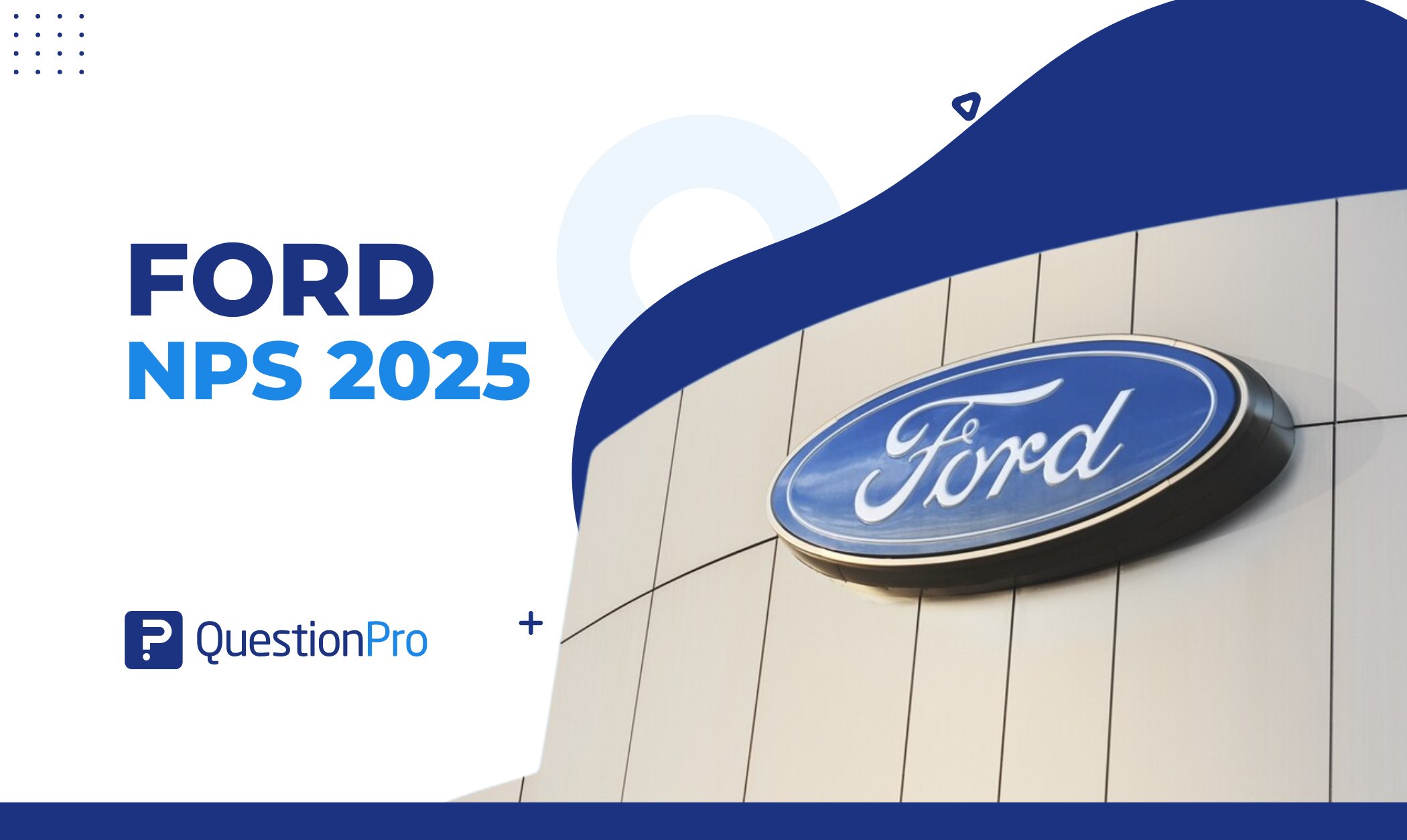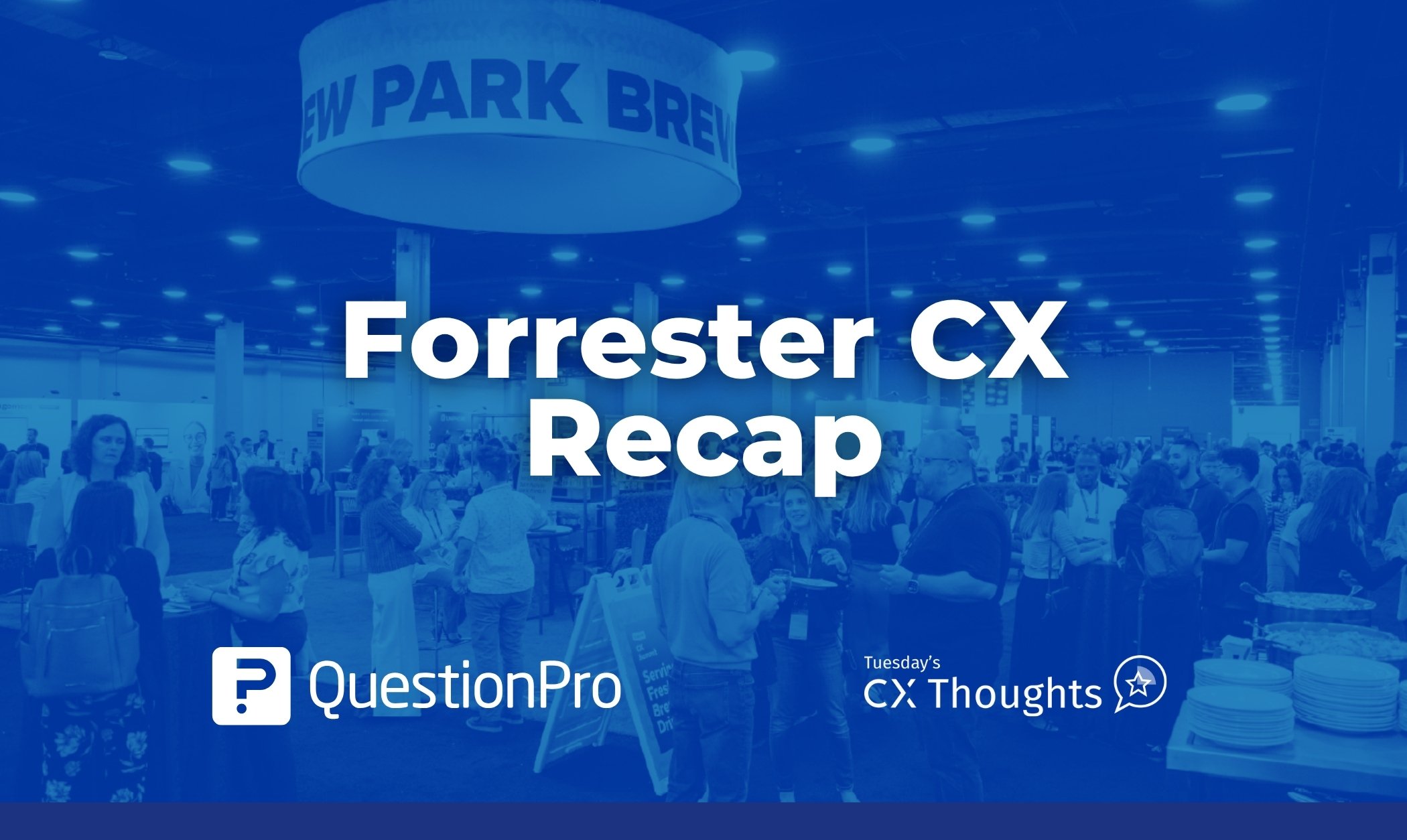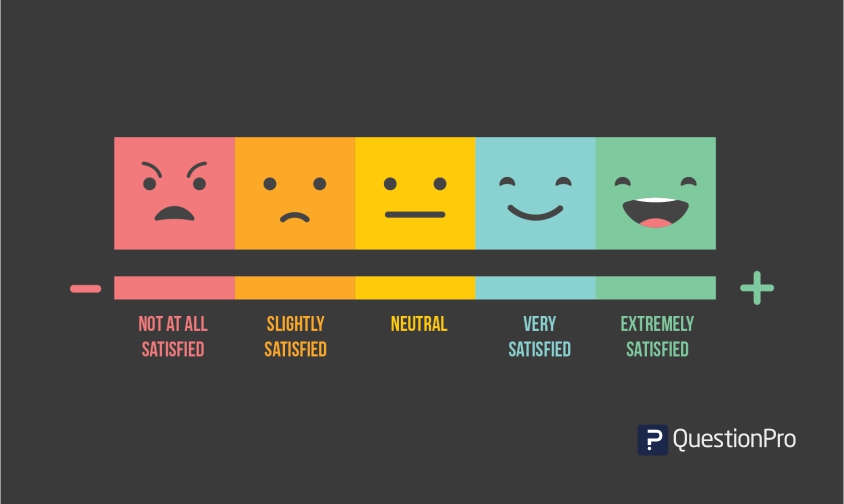
Likert scale questions can be used to determine the level of agreement or perception, as well as the level of satisfaction. So, “How pleased are you with your job?” could be a question from the Likert scale examples.
The answer could be on a scale of 1 to 5, where 1 is strongly dissatisfied, and 5 is strongly satisfied with this question. This type of question collects useful data quickly. It can help the organization meet expectations by identifying opportunities for improvement.
Surveys are incomplete without an insightful Likert scale question. In this blog, we will be looking at some of the best Likert scale examples used in surveys and questionnaires. So, first things first, let’s define it.
What is the Likert Scale?
Named after its founder, psychologist Rensis Likert. The Likert scale question is used to understand the level of agreement that the respondents have with a particular statement.
Likert scale questions offer a range of answer options from either end of the spectrum for the respondents to choose from. Over the years, they’ve evolved to become a favorite amongst survey makers or easy test makers as they obtain definite opinions, impressions, and approaches from the respondents.
The range provided in this scale is used to gain insights into respondents’ feelings and opinions. Agreement, frequency, likelihood, quality, or importance can be measured using a Likert scale with corresponding anchors. Scales can be either a unipolar Likert scale or a bipolar Likert scale.
Learn more about the Likert Scale and the differences between Unipolar vs Bipolar Likert Scale Questions.
Likert Scale Examples
This scale has become very popular for online surveys and is commonly used in studies like customer satisfaction, employee engagement, and employee satisfaction. One can bifurcate the Likert scale into two types:
Decide wisely which type of Likert scale would provide the best results. Analysis of the target audience and evaluation of the purpose of survey research are critical in determining this type of question.
Depending on whether you’d want to prompt the respondents to give responses that you wish to or wish to provide a neutral option, the respondents can select if they do not have any bias towards the other answers.
The odd Likert scale question offers a central point for the respondents to choose if they’re neutral. Even Likert Scale questions don’t have a middle option, so respondents have to choose from the available answers.
Different people will understand the midpoint on the Odd Scale in various ways, but it will always maintain some level of objectivity.
Odd Likert scale examples
Odd Likert Scale questions include a neutral option for people who don’t feel strongly one way or the other. This is helpful for respondents who don’t have a clear positive or negative opinion. Usually, these questions offer 3, 5, or 7 choices.
These questions are a great way to understand how customers feel about specific products, services, or experiences. Here, odd Likert Scale examples could include statements like, “How satisfied are you with our service?” with answer options ranging from “Very Satisfied” to “Very Dissatisfied,” including a neutral middle choice.
They work best in surveys when you want to let people pick a neutral option, especially if they’re unsure, so you can avoid confusion. When someone selects the neutral option, it means the brand hasn’t done enough to make the experience truly satisfying for them.
Odd Likert scales can be use when the survey creator wants to give respondents the freedom to express their opinions in more detail. This way, people can share a wider range of feelings and thoughts in their answers.
3-point Likert scale example for Agreement
It offers agree and disagree as to the farthest points along with a neutral option.
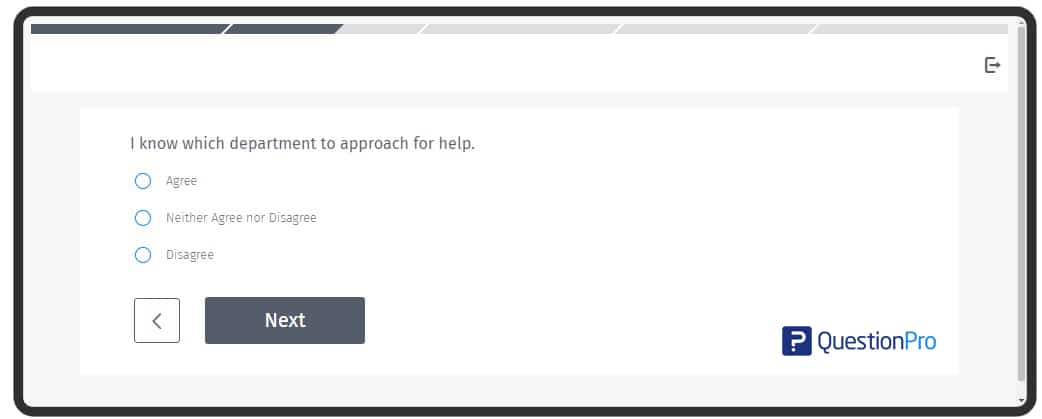
5-point Likert Scale for Agreement (Example)
This scale would consist of 5 answer options, which will contain poles and a neutral option connected with intermediate answer options.
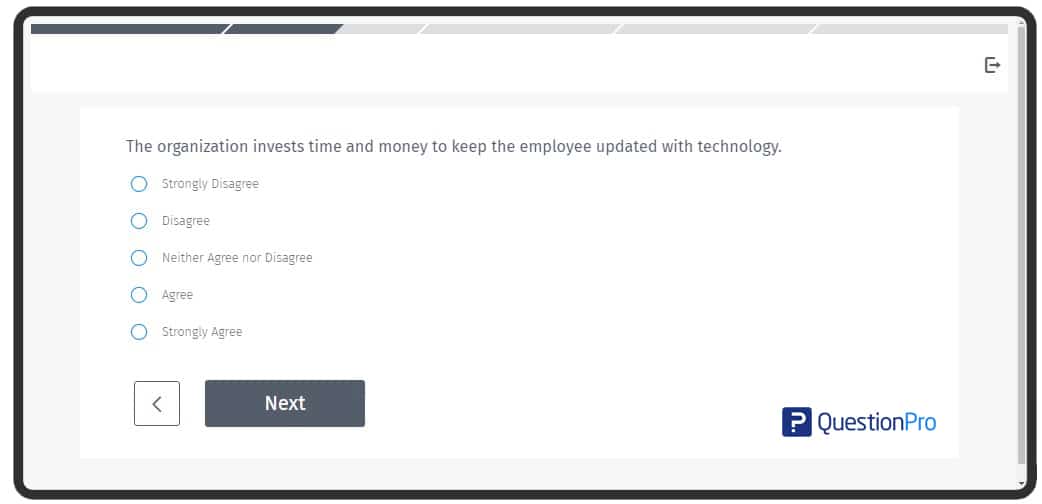
7-Point Likert Scale Example for Agreement
This scale offers seven different answer options related to an agreement that would be distinct enough for the respondents to answer without getting confused.
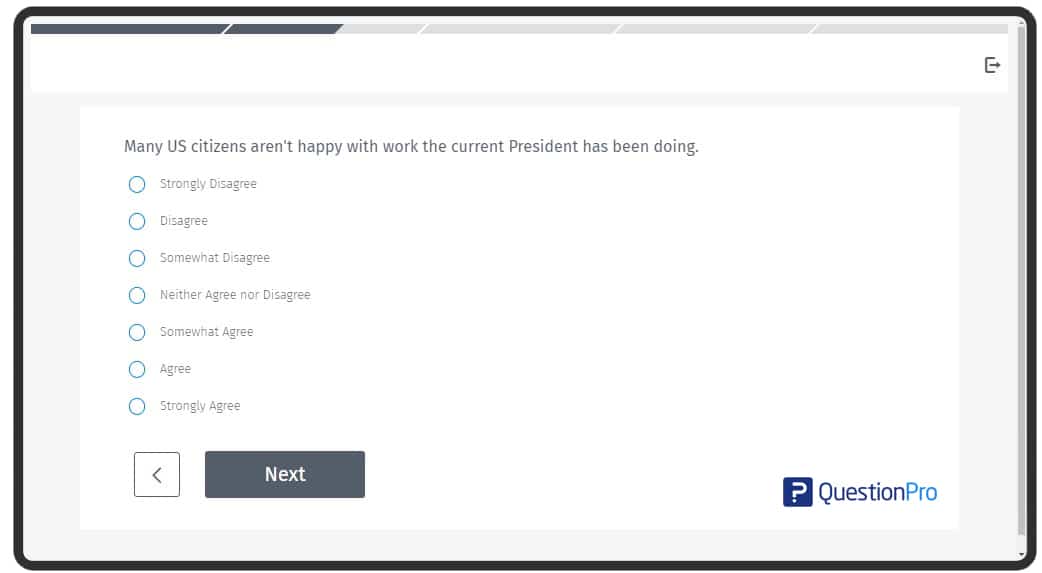
5-point Likert scale example for Satisfaction
This scale of measuring satisfaction will offer five answer options: satisfied and dissatisfied at the poles and a neutral option at the midpoint. These options are interlinked with other options that would provide respondents with the variations they are looking for.
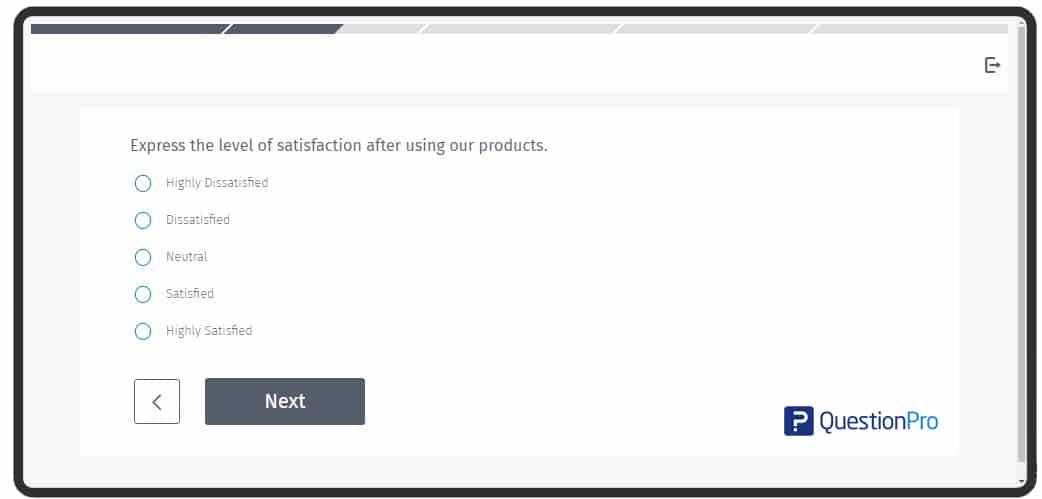
7-point Likert scale example for Satisfaction
This satisfaction scale provides seven answer options. The ends are marked by “satisfied” and “dissatisfied,” with a neutral option in the middle. The other options must be distinct and add value to the scale. This ensures respondents can give precise feedback without any obstacles.
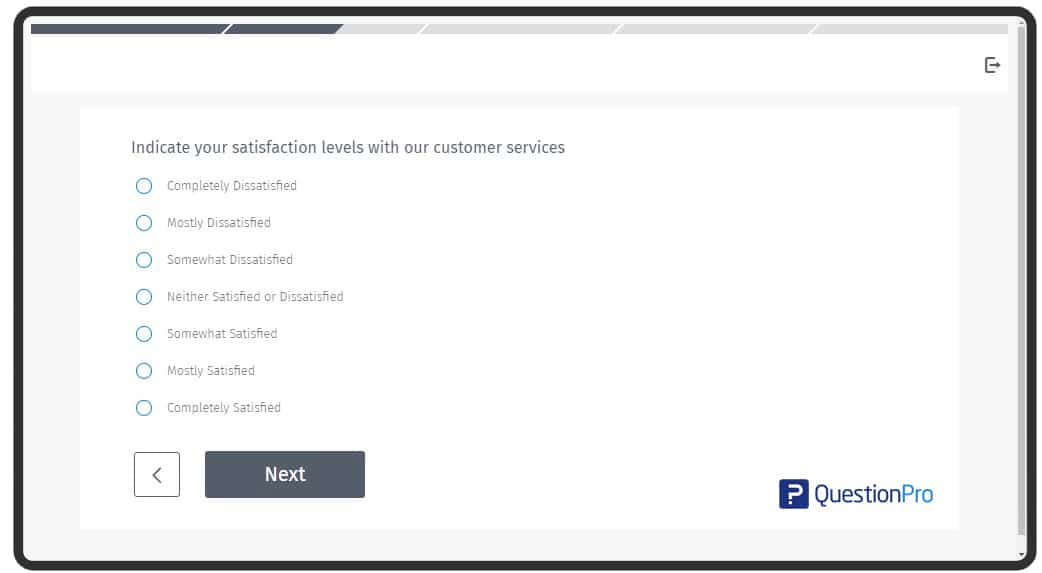
Researchers can similarly use these scales for measuring likelihood, importance, frequency, and many other factors.
Odd Likert Scale questions help measure customer feelings about products and services. You can use this free Odd Likert Scale Survey Template, which offers over 10 sample questions and can be customized for researchers, businesses, or brands.
Even Likert scale examples
Likert Scale questions offer a range of answer options from one extreme to another. Here, even Likert Scale examples could include a question like, “How likely are you to recommend our service?” with options ranging from “Extremely Likely” to “Not Likely at All,” forcing respondents to lean either positively or negatively. Typically, there’s no middle or neutral option included.
This Likert scale is usually helpful when you want to understand people’s awareness or insights, and you don’t need a neutral option. It’s great for situations where you think respondents might lean towards giving biased feedback.
2-Point Likert scale example for agreement
This question is the simplest Likert scale question example where there’ll be just two options, such as agree and disagree as two poles of the scale.
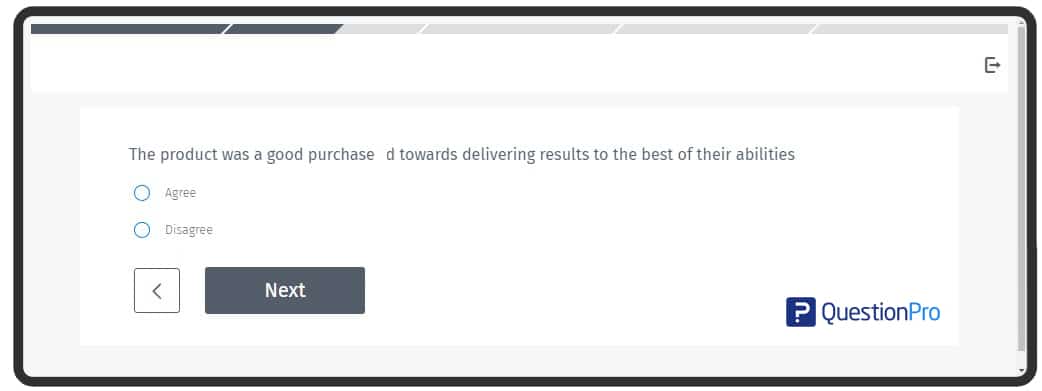
4-point Likert scale example for agreement
This question will have two poles linked with intermediate agreement answer options. You can use these questions to measure customer satisfaction as well as employee satisfaction.
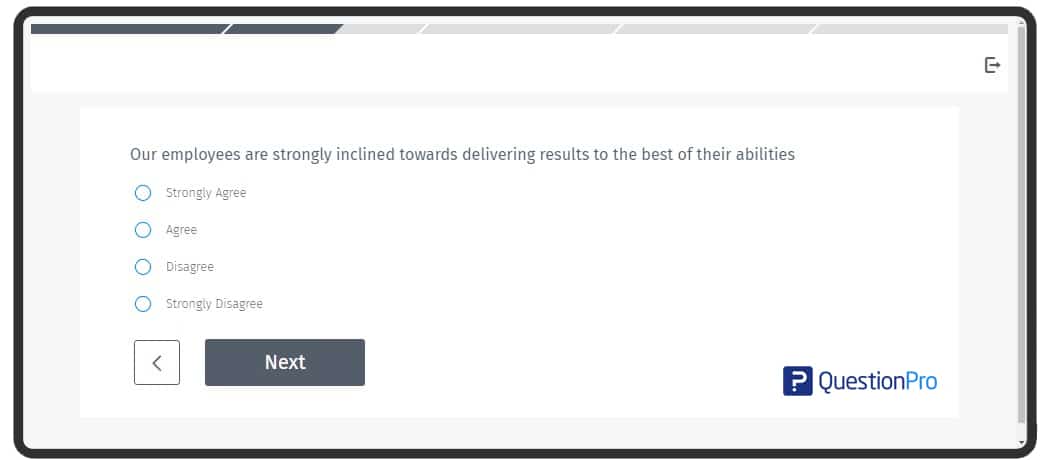
Example of a 4-point Likert scale for satisfaction
Poles regarding satisfaction, like satisfied and dissatisfied, will be connected to other answer choices. No neutral answer option will be included.
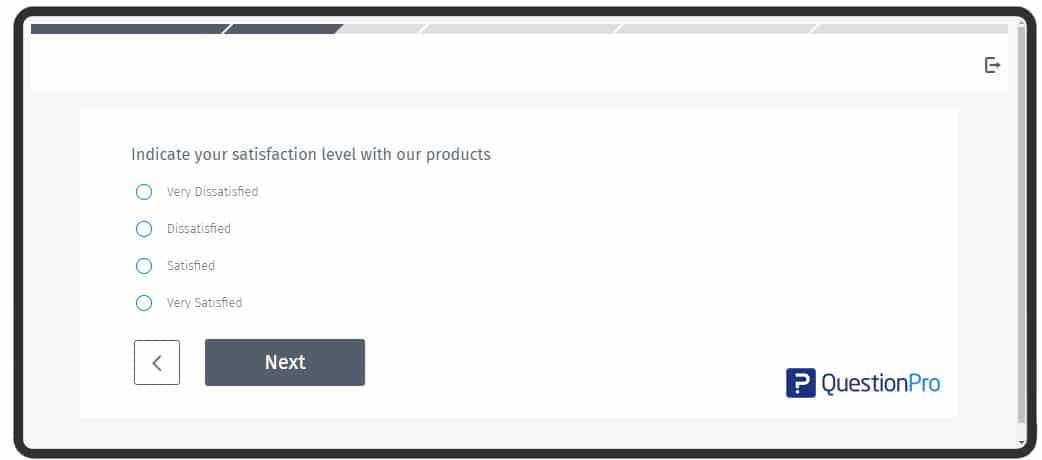
4-point Likert scale example for frequency
To measure frequency, marketers do not necessarily need a midpoint, so they can use an even scale question.
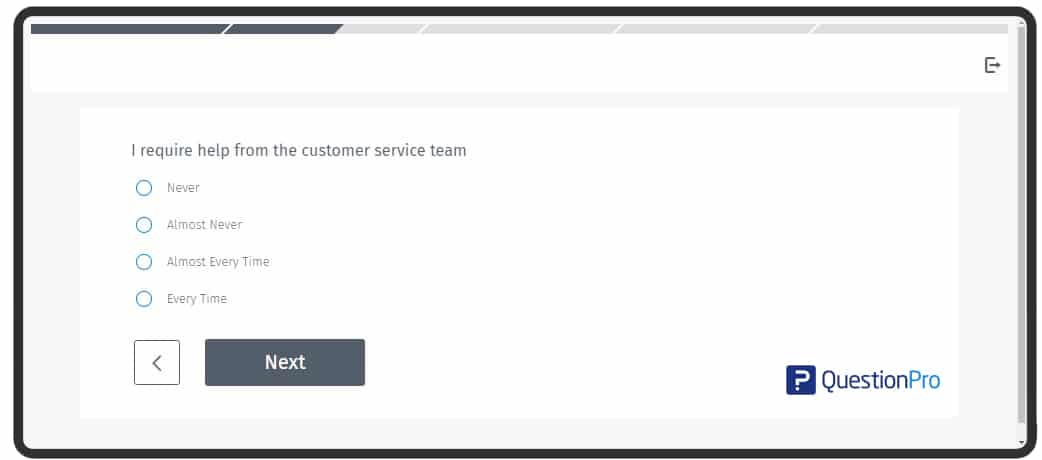
4-point Likert scale example for likelihood
Understanding the likelihood of brand shareability doesn’t require a center point. An even scale question can suffice the requirement of understanding brand shareability.
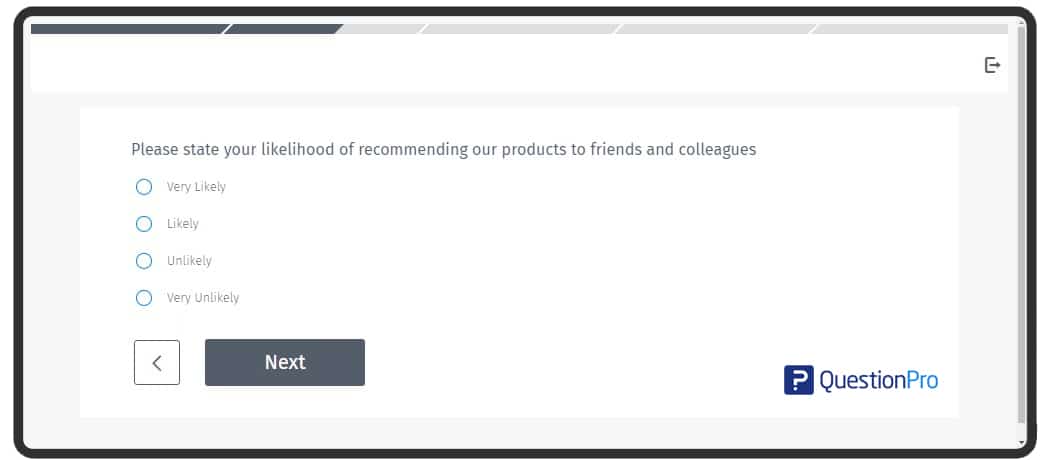
Likert Scale questions are used to measure people’s attitudes and opinions. Instead of just offering a simple yes or no, they provide more answer choices. You can use this Even Likert Scale Survey Template and include additional questions to gather responses, even when a neutral option isn’t needed.
Benefits of Using the Likert Scale Question
Researchers often use Likert scale survey questions in their research surveys to find out how people feel, what they think, or what they believe. Also, using a Likert scale questionnaire for market research has many benefits. Some of the benefits include:
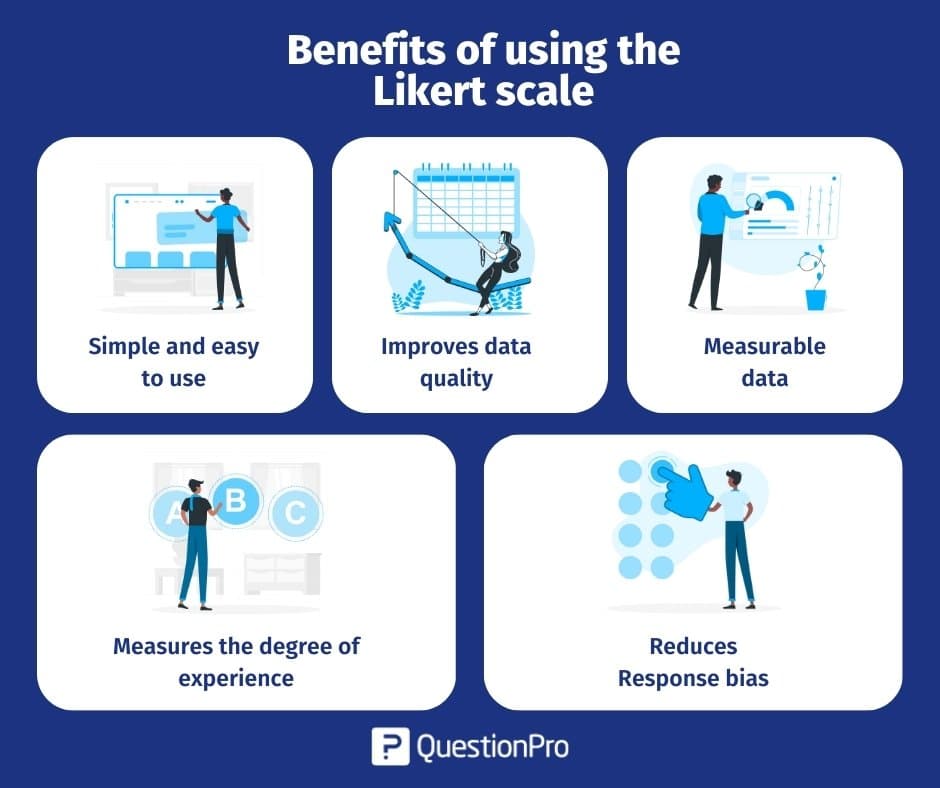
- Simple and easy to use: These questions are easy to use and require little effort from survey respondents. They are simple to understand and suitable for a wide range of people, even those with low education or language abilities.
- Improves data quality: This kind of question helps to keep your respondents satisfied and enhances data quality. It can help you avoid survey design mistakes like asking broad questions that respondents may struggle to answer.
- Measurable data: These questions generate measurable data that is simple to analyze and compare with other datasets. This makes it possible for researchers to draw important conclusions from the data and identify patterns or trends.
- Measures the degree of experience: It measures the respondents’ level of experience. The response data assists you in determining the scope of their current experience. You can compare it to past results to see if it has improved over time.
- Reduces response bias: Response biases are less likely to happen with this kind of scale question. When survey respondents have a clear set of response possibilities, they are more likely to provide honest answers.
Can conformity bias lead to unethical behavior? Learn about conformity bias, its types, tips, and examples.
How to Analyze Likert Scale Surveys
Likert scale analysis uses numbers to help us identify trends or differences in people’s opinions. When analyzing Likert scale data, we need to use a different method because the data is based on rankings instead of just numbers.
Likert scale responses represent an order, such as from “strongly disagree” to “strongly agree,” but they don’t have exact numeric values, so calculating an average is not appropriate. Here is how you can analyze this data correctly:
Understanding Ordinal Data
Likert scale survey data is ordinal, which means the numbers assigned to responses (like 1 for “strongly disagree” and 5 for “strongly agree”) show an order but don’t measure the actual difference between the answers.
For example, the difference between “agree” and “strongly agree” isn’t a fixed number, so calculating averages can lead to misleading results.
Using the Mode
The mode is the best way to summarize Likert scale data. It shows the response that people chose the most. For example, if most people selected “satisfied” in a survey, the mode tells us that’s the most common opinion.
Visualizing the Data
Bar charts are a great way to visualize Likert scale survey data. Each bar represents a response option, and the bar’s length shows how many people selected that option. This makes it easy to understand the distribution of responses and identify the most popular choice.
Tabulating the Data
Creating a frequency table is another simple way to analyze Likert scale responses. It shows how many people chose each option, helping you spot trends or patterns in the data. This method gives a clear summary of how participants responded.
Tips and best practices
The Likert scale is a common survey technique for measuring attitudes, beliefs, and perceptions. In the above, we looked at the Likert scale samples to use in your survey. Now, look at some tips and best practices for designing your survey.
- Define the scale clearly: To ensure participants understand the scale, clarify each response option. Label each scale endpoint, such as “Strongly Agree” and “Strongly Disagree“.
- Format your response appropriately: Think about the best response format for your questions while creating your survey. You can use a radio button, a drop-down menu, or a sliding scale.
- Use the Odd Likert scale: Using an odd-numbered rating scale with a “Neither Agree nor Disagree” or “Neutral” option gives respondents a balanced choice. This helps them avoid feeling pressured or biased toward one side of the scale.
- Avoid using double-barreled questions: Your questions should be clear and straightforward so that you can understand exactly what they are. Make sure you are not asking double-barreled questions that have multiple possible answers.
- Use questions, not statements: Avoid statement-based questions to avoid acquiescence bias. For example, the question “How much do you agree with the following statement: “I am satisfied with my job responsibility”?” is more likely to result in a biased response than “How satisfied are you with your job responsibilities?”.
- Test your Likert scale survey questions: Before launching, test your questions with a small sample. It can ensure clear questions and acceptable response alternatives. This can help you find problems and make changes before the comprehensive research.
Design your survey with QuestionPro!
The Likert-scale survey makes feedback and information easy to understand and reply to. This is an important question to assess a topic’s perspective or attitude, which will help further investigation. We hope the above Likert scale examples will help you understand its use.
Any company can use QuestionPro to conduct an online survey utilizing the Likert Scale. QuestionPro lets you create Likert scale surveys that are easy for people to answer quickly. This simplicity helps you get better response rates. You can also include a follow-up question to understand why respondents chose their answers.
Test this kind of question right away by creating a free account.





